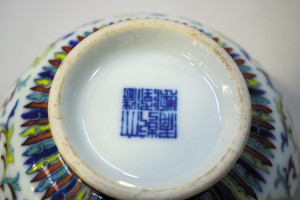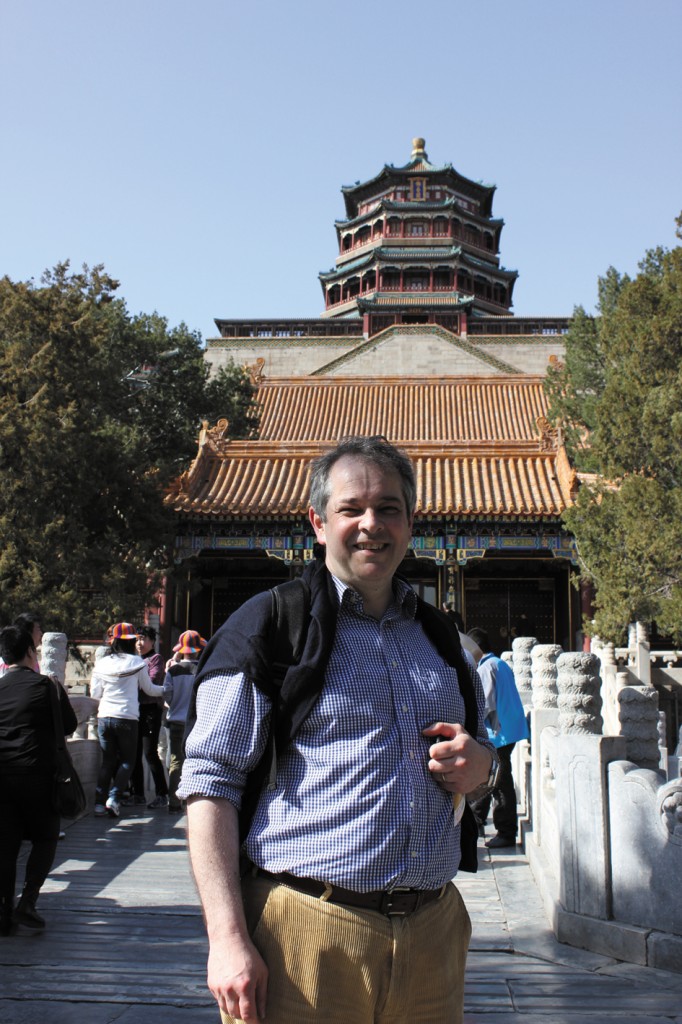
By the mid-18th century, Chinese porcelain produced for imperial appreciation was at its height. The Qianlong period (1735-1795) overlapped with the reign of our own King George III. As the Industrial Revolution grew under the Farmer King in Britain, the processes and techniques of porcelain manufacture in China reached an advanced stage. This found expression in restrained decoration, characterized by delicacy and brilliance.
Among the favourite wares chosen by Chinese potters of the 18th century for inspiration or copying were those of the 15th century from the early Ming and Chenghua reigns. That they chose to copy earlier styles is reflective of general trends in Chinese art, which display a tendency to antiquarianism. Balancing this was the desire of Qing rulers to validate their own sovereignty and status through associating themselves with earlier reigns by invoking these earlier styles in the designs for their own imperial porcelain.

On my recent visit to China I was fortunate to visit the Imperial Summer Palace, which was reconstructed after the ravages of the Anglo-French invasion of 1860 and the Boxer Rebellion of 1900. The gardens were originally commissioned by the Qianlong Emperor in 1749. Today, the gardens are enjoyed by thousands of Chinese and some foreign tourists. In the palace are rooms furnished with Qianlong period furniture and porcelain of the finest quality. They give an insight to the genius and restraint of Chinese imperial taste in the 18th century.
The piece illustrated is a Chinese doucai porcelain globular jar bearing the six-character seal mark of Qianlong. The body is decorated with slender stems of lotus, alternating with narcissus, over a lower frieze of the eight auspicious Buddhistic emblems, which include symbols representing eternal harmony, knowledge, purity and enlightenment. The third and lower tier is of flowers. All these decorative elements communicate with each other between a frieze of flame-like lappets and a ruyi-encircled rim. All are finely outlined in underglaze cobalt blue.

Doucai decoration first found favour during the Chenghua reign (1465-1487). The delicate cobalt-blue outline to all the coloured enamels defines doucai decoration and unites them with delicacy and brilliance. It can be difficult to discern the age of these doucai pieces. The specialist and connoisseur will look for differences in the cobalt blue of the outline, which often has a softer appearance on earlier objects. Later examples also fail to capture the charming ivory tint to the glaze of 15th century examples. Qianlong period examples, however, are celebrated for their translucent enamels, alive with colour, which are set off by the precision of the cobalt-blue outlines. We are left with the impression that they are at once fragile and precious.
It is this combination of harmonious design and restraint, combined with the shear quality of the painting and execution, which never fails to delight me. Delicate and brilliant, doucai pieces take some beating in any century!
View Toovey’s Specialist Sales of Oriental Ceramics and Works of Art by clicking here.
By Revd. Rupert Toovey. Originally published on 8th May 2013 in the West Sussex Gazette.